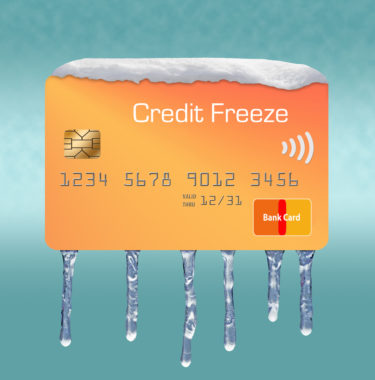It’s important to know your credit score because so many financial transactions rely on it. Examples include obtaining:
- Home and auto loans, whether related to approval or your interest rates;
- 0% annual percentage rate (APR) introductory credit cards, or cards that offer attractive terms for transferring balances;
- Cards to your favorite stores;
- Student loans;
- Utilities.
It’s crucial to note that you’ll rarely have just one credit score since there are three different reporting bureaus: Experian, TransUnion, and Equifax. Each bureau shares many of the same rating criteria, but there are enough differences to typically make each score unique.
With these details in mind, how can Capital One CreditWise and FICO help? This topic is exactly what we’ll cover below, starting with CreditWise.
Table of Contents
What Is Capital One CreditWise?
Capital One CreditWise is a free tool that allows you to check and monitor your credit score. The tool also allows you to discover key factors that impact your score and receive email alerts when something on your account changes. You can even monitor your Social Security number and track the dark web.
CreditWise’s simulator also allows you to determine how a transaction might impact your score before you agree to it.
All of your data is encrypted with 256-bit Transport Layer Security (TLS), and you can access CreditWise online or via their app for iOS and Android devices.
You don’t need to be a Capital One customer to utilize their CreditWise benefits. However, you do need to be at least 18 years old with a valid Social Security number they can use to verify your identity and access your TransUnion credit profile.
Once your account is set up, you can access your credit score by logging into your account and visiting the credit summary on the home page. There, you’ll also find factors that contribute to your score, such as on-time payments and credit line ages.
Is CreditWise Accurate?
CreditWise uses TransUnion’s VantageScore 3.0 scoring model. According to the TransUnion website, it was developed by all three national credit reporting companies (including Equifax and Experian) and is “more predictive, more consistent, and more stable than older models.”
From a granular perspective, VantageScore 3.0 — whose scores range between 300 and 850 — changes real estate loan classifications, breaks installment loans into four separate categories, and distinguishes between secured and unsecured revolving accounts.
Given these factors, VantageScore 3.0 is ideal for individuals with prime or near-prime scores.
With this information in mind, VantageScore 3.0 is accurate, but it doesn’t provide access to your FICO score. Without this information, you won’t have a complete idea of where your credit report stands and everything impacting your score.
What Is FICO?
The FICO (Fair Isaac Corporation) scoring model uses the information found in your credit reports to generate a three-digit number that, like VantageScore 3.0, ranges between 300 and 850.
According to the FICO website, their scores “are used by 90% of top lenders to make decisions about credit approvals, terms, and interest rates.” Therefore, if you apply for almost any type of credit, it’s likely that the creditor uses your FICO score to determine your creditworthiness.
With this said, there are two different types of FICO scores, depending on the industry:
- Base FICO scores for any credit obligation;
- Industry-specific FICO scores for auto lenders and card issuers.
When it comes to accuracy, FICO scores are older than VantageScore 3.0, and they’re a trusted, fair, and reliable measure of an individual’s likelihood to repay their loan as agreed.
CreditWise vs. FICO
Both CreditWise’s VantageScore 3.0 and FICO employ the same utilization rates, payment trends, and tax lien judgments in their rating models. They also share the same score ranges. However, there are several differences in each factor and the weight placed on them.
For example, CreditWise’s VantageScore 3.0 model breaks down credit scores into the following factors:
- 40% payment history;
- 21% age and type of credit;
- 20% credit utilization;
- 11% balances;
- 5% recent credit;
- 3% available credit.
How does FICO stack up? When it comes to their factors, you’ll find several differences compared to VantageScore 3.0:
- 35% payment history;
- 30% amounts owed;
- 15% length of credit history;
- 10% new credit;
- 10% credit mix.
Both models ignore paid collection accounts, although unpaid medical collections are weighed with FICO, but less so than other types of collection accounts. Each model also excludes:
- Your salary;
- Your occupation and title;
- Your employer or employment history;
- Interest rates charged on other accounts;
- Child or family support obligations;
- Credit counseling.
Taken together, creditors can use FICO and VantageScore 3.0 for the same purposes, including credit cards, mortgages, and auto loans. However, FICO is still used in most lending situations, whereas VantageScore 3.0 is more of a consumer-facing model for learning about your credit score.
What’s a Good Credit Score Range?
CreditWise’s VantageScore 3.0 and FICO’s models feature similar credit rating ranges. However, there are several differences between them. For example, VantageScore 3.0 uses the following scores:
- Very Poor: 300 to 549;
- Poor: 550 to 649;
- Fair or Average: 650 to 699;
- Good: 700 to 749;
- Excellent: 750 to 850.
Comparatively, FICO’s score ranges are as follows:
- Very Poor: 300 to 579; 16% of Americans fall within this range.
- Fair: 580 to 669; 17% of Americans fall within this range.
- Good: 670 to 739; 21% of Americans fall within this range.
- Very Good: 740 to 799; 25% of Americans fall within this range.
- Exceptional: 800 to 850; 21% of Americans fall within this range.
Read on to find out which factors move a credit score between these ranges.
Factors That Affect Credit Scores
FICO and CreditWise’s VantageScore 3.0 have more in common than otherwise since their goal is to predict your lending risk based on your past financial behavior. VantageScore and FICO’s newest XD model can use phone and cable bills to predict borrowing behaviors, even if you don’t have established credit.
However, each model places different emphases on factors that contribute to your credit score, leading to different calculations. These factors include when your score is determined, if you’ve recently missed a payment, how long you’ve had credit, if you have a low-balance collection on your report, and how far back your hard inquiries go.
How FICO Perceives These Factors
When it comes to calculating your credit score, FICO:
- Takes a snapshot of your credit situation at the time of the inquiry;
- Will ding you for a recently missed payment, even if you have an otherwise positive financial history;
- Scores those with longer financial histories better than those who have just started building their credit. Specifically, you’ll need to have a credit account that’s at least six months old to generate a FICO score;
- FICO’s newest model (Score 9) ignores paid collection accounts and places less emphasis on unpaid medical collections;
- Recent FICO models ignore duplicate hard credit inquiries within a 45-day window.
How VantageScore Perceives These Factors
Comparatively, VantageScore 3.0:
- Looks at your data over time to identify patterns;
- Doesn’t weigh a recently missed payment as strongly if you have an otherwise positive history of on-time payments;
- Can still generate a score even if you only have one account that’s less than six months old;
- Doesn’t feature an exemption for low-balance collections;
- Ignores duplicate hard credit inquiries within a 14-day window.
VantageScore 3.0 also includes reason codes that can help you better decipher and understand the factors contributing to your credit score.
Image Source: https://depositphotos.com/




